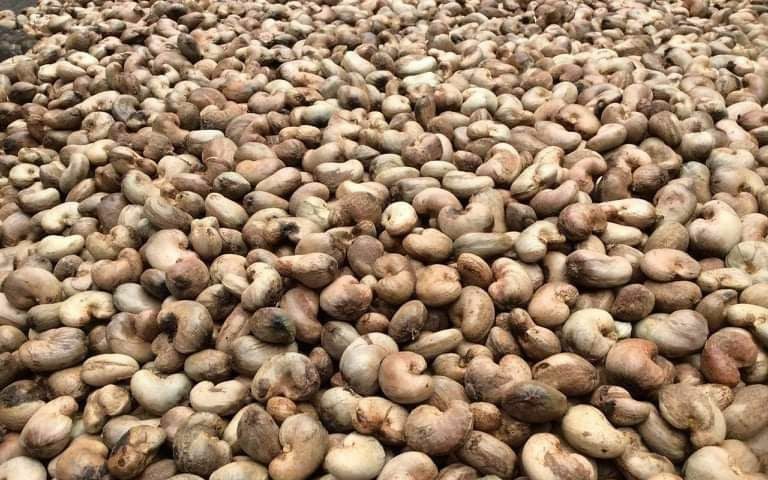Early rains have damaged cashew crops and delayed the durian harvest, farmers say, as unseasonable weather patterns are restoring water reserves after recent years of drought but causing their own havoc.
Many Phnom Penh streets were last night inundated after a late-afternoon downpour, leading to temporary gridlock and motorcyclists pushing their bikes through knee-deep water. The rain followed this year’s pattern of a wet dry-season that has raised river levels in the country by around 1.5 meters compared to the same time last year.
The disruptions have been felt by some of the country’s farmers. Heng Linna, a cashew farmer in Preah Vihear who is also deputy head of the provincial Cashew Nut Association, said around 40% of the cashew crop had been lost due to the effects of rain.
“It started to have more rain right when the flowers started blooming, and there’s nothing left,” Linna said, explaining that the cashew trees usually flower in February and March.
She added that the rains also brought out more insects and worms, and it was difficult to spray the plants.
Some farmers in the area who could usually harvest around 1 ton per hectare were getting nothing this year, she said.
Uon Silot, the national president of Cashew Nut Association, said cashew production had severely dropped because of the changing climate.
Exports to Vietnam were down 43% in the first four months of the year compared to the same period a year earlier, Silot said, citing figures from Vietnamese cashew traders. He added that the country produced a total of 1.1 million tons of cashews last year.
In Pailin, durian farmers have also faced challenges from the weather. Pach Sopheak, a durian farmer, said rains make young fruit fall from the tree, and too much water in the ground can also kill trees’ roots. Wet weather can also cause the skin of the fruit to rot and delay the time to ripen.

“Normally, my durian should be ready to pick by May 15 at this time of the year, but now it’s been delayed until the 17th and they’re still not yet ripe enough to pick,” Sopheak said on Tuesday. “I think maybe at the end of this month they will be ripened.”
Climate change is said to be behind a series of shifting weather patterns in the country — a shorter rainy season, recent droughts and unseasonal rains — as well as new challenges for farmers.
Soth Sophea, deputy chief of the Kirirom Keo Romiet farming community in Kampong Speu, said his community’s mango crop was down 20%-30% due to the early rains.
“When the mango trees start to flower and fruit and it rains for two to three days in a row, then it makes the flower and fruit fall,” Sophea said.
A member of a longan farming community in Pailin, Heng Vanna, also said longan crops had decreased around 30% due to the unseasonal rains, but said the effect was less than for cashews and durians because longans grew on hardier plants.
The inter-governmental Mekong River Commission said this week that the year had been the wettest in recent times after four years of drought — but river levels still remained below the 60-year average and the commission warned there could still be moderate drought.
Cambodian water levels on the Mekong were up 0.7-2.2 meters compared to a year earlier, or 1.5 meters on average, it said.
Nevertheless, climate change and drought have created an “unprecedented challenge” for Southeast Asia, said MRC chief executive Anoulak Kittikhoun. “Our wetlands are disappearing, nourishing sediment is reduced, and rising salinity is spoiling rice crops.”
Representatives of the Agriculture Ministry could not be reached.
Theng Savoeun, Coalition of Cambodian Farmers Community president, said the early rain could in fact be good for many farmers so they have enough water in reserve for their crops.
But climate change was forcing farmers to make difficult choices, Savoeun said, adding that he was concerned that there could be a dry period in the middle of this year’s wet season.
Correction: An earlier version of this article misstated the Mekong River Commission’s forecast of drought risk this year.













